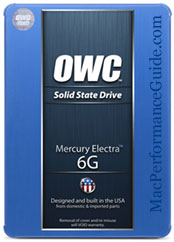
|

|

|

$610 SAVE $110 = 15.0% ZEISS 32mm f/1.8 Touit Lens for FUJIFILM X OUT OF STOCK in Lenses: Mirrorless
|

|
OWC Mercury Electra 960GB — RAID-5, RAID-4, RAID-0, RAID 1+0
Related: 4K and 5K display, computer display, Other World Computing, RAID, RAID-0, RAID-4, RAID-5, SSD, storage, Thunderbolt, weather events
OWC Mercury Electra 6G 1TB about $449. Thunderbay Mini starting at about $379 without drives. Thunderbay Mini with 4 X 1TB SSD about $2399. RAID-5 edition optional.
SoftRAID 5 makes it possible to use four SSDs in an OWC Thunderbay 4 Mini to create a variety of RAID types (or single volumes or partitions).
All results
All setups tested with volumes created via SoftRAID 5.0.5 using a 64K stripe size for all.
The DiskTester run-sequential-suite command was used to chart speed versus transfer size.
disktester run-sequential-suite -s 64K -e 256M --iterations 5 --test-size 4G
The graph below captures all the results together, subsequent graphs break out various combinations.
- Each variant has the same color for read and write so the lower line of the same color is writes, the higher line, reads.
- Reads are always faster than writes.
- Single drive speed is at bottom.
Summary of behavior:
- 4-drive RAID-0 stripe is fastest, but only marginally faster than a 3-drive RAID-0 stripe, due to the bandwidth limitations of Thunderbolt 2.
- RAID-4 and RAID-5 are the same speed for writes, but RAID-4 is markedly better than RAID-5 for reads, just as seen with the OWC Mercury Extreme Pro 6G 240GB SSDs.
- Speed of a single drive is limited by the Thunderbolt to SATA bandwidth (each drive gets one lane and maximum possible speed is 400 MB/sec per drive). But 4 drives generally are maxed-out at about 1400MB/sec on Thunderbolt 2.
- RAID 1+0 is remarkably fast for what it is (striped pair of mirrors).
- Peak speed requires very larger transfers, larger than most applications tend to do. With 2MB transfers, only about 2/3 of the speed potential is reached.
- With a stripe size of 64K, 64K transfers still benefit from all forms of RAID shown here, presumably since the load is shared over multiple drives.
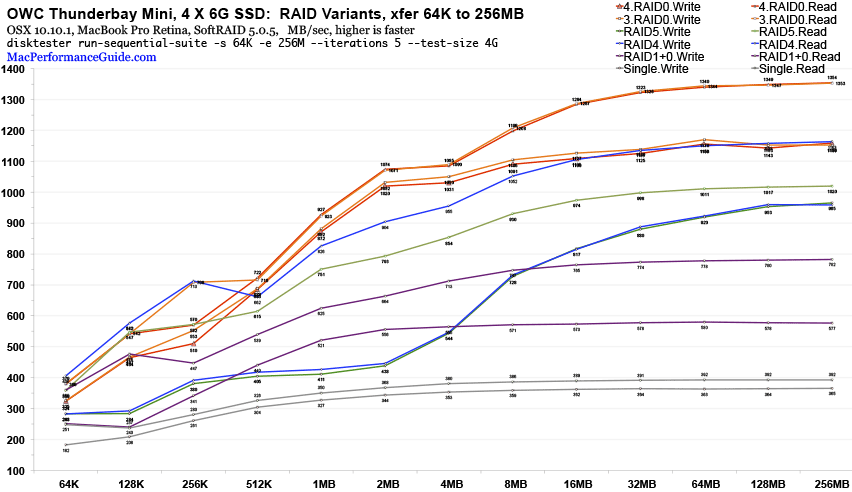
RAID-0 striping: 4 SSDs vs 3 SSDs
Three SSDs is the same performance as fou in all practical terms.
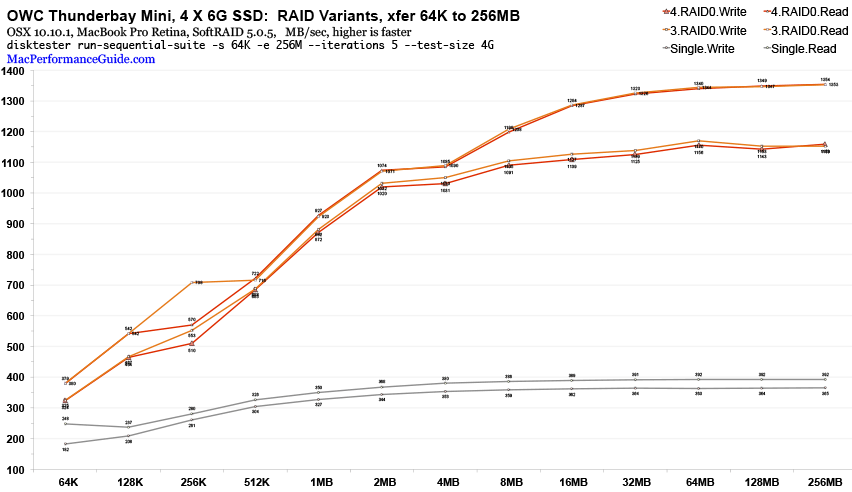
RAID-4 vs RAID-5 vs RAID-0 x 3
RAID-4 (blue lines) and RAID-5(green lines) are the same speed for writes, but RAID-4 is significantly faster for reads. Both using 4 SSDs of course.
A 3-drive RAID-0 stripe offers a substantial advantage for write speed over either RAID-4 or RAID-5, but read speeds are much closer, particularly at transfers of 1MB or less, a very real world case. But with very large transfers (8MB on up), the write speeds are excellent for RAID-4/5.
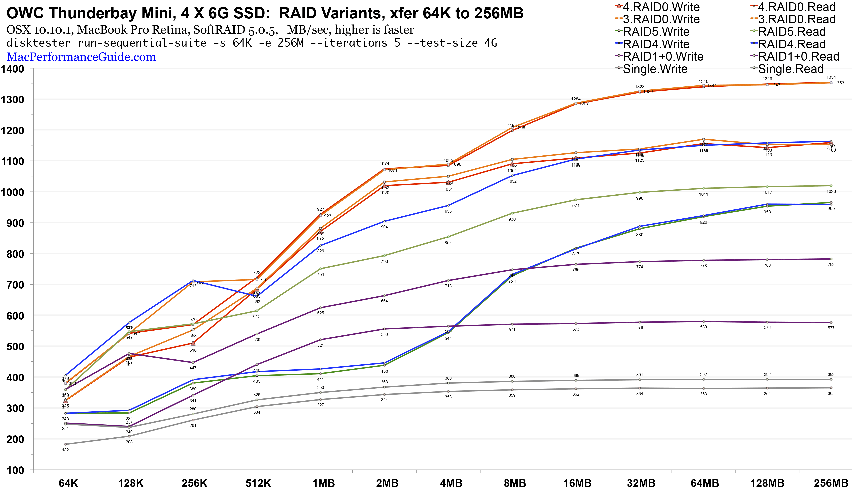
RAID-4 vs RAID 1+0
RAID 1+0 (striped pair of mirrors) has a 50/50 chance of surviving a 2nd drive failure versus RAID-4 (or RAID-5). But is it worth giving up the performance and capacity, especially for SSDs?
But observe that RAID 1+0 (purple lines) is actually faster than RAID-4 (blue) for writes with transfers in the 512K to 4MB range.
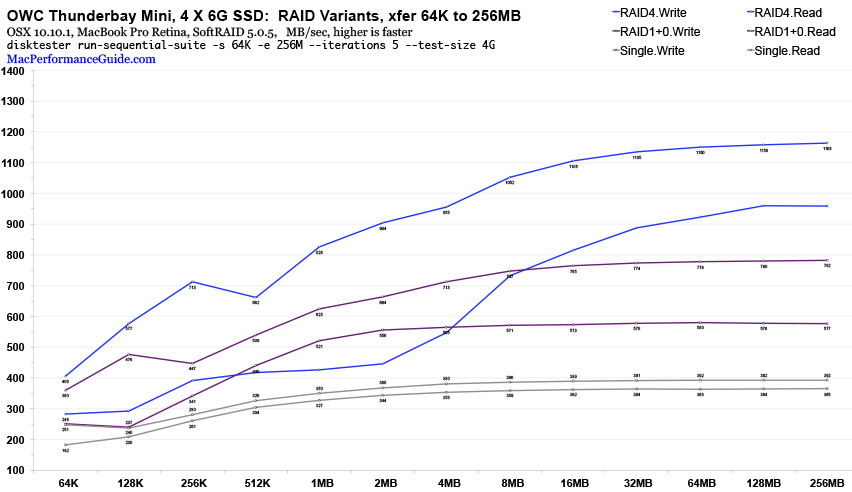
Conclusions
No matter how tested, the OWC 960GB Mercury Electra 6G delivers outstanding results. As a RAID-qualified drive, it’s a terrific choice for the OWC Thunderbay 4 Mini.

 diglloydTools™
diglloydTools™

